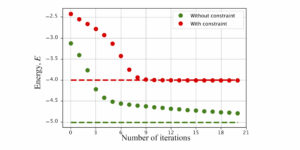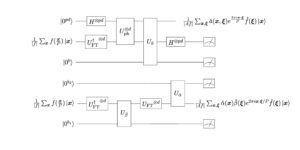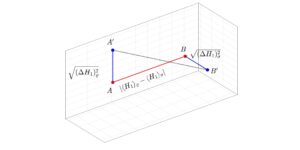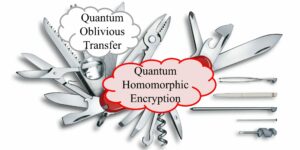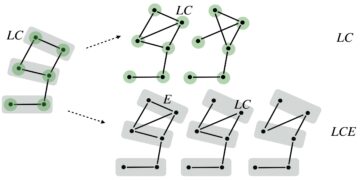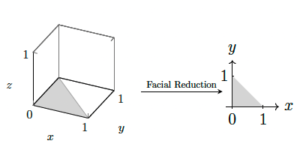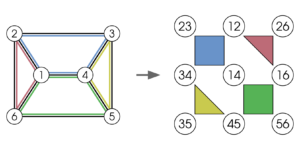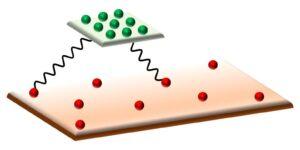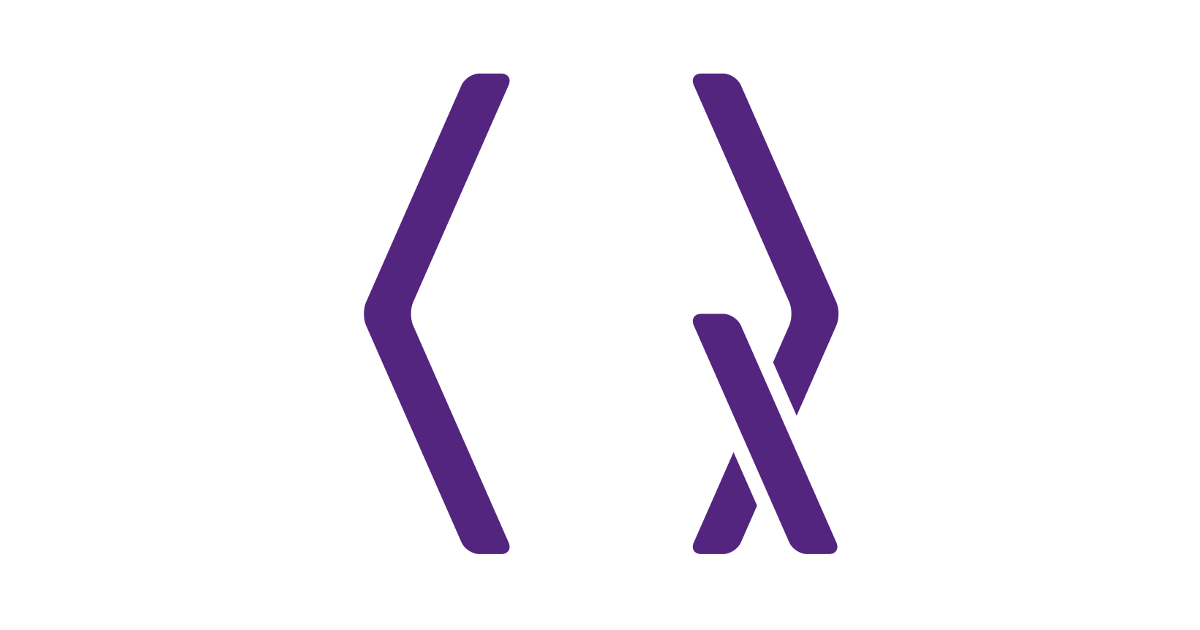
1Superconducting Quantum Materials and Systems Center (SQMS), Fermi National Accelerator Laboratory, Batavia, IL 60510, USA
2Fermi National Accelerator Laboratory, Batavia, IL, 60510, USA
3Department of Physics, University of Illinois Urbana-Champaign, Urbana, IL, United States 61801
4USRA Research Institute for Advanced Computer Science (RIACS), Mountain View, CA, 94043, USA
5Quantum Artificial Intelligence Laboratory (QuAIL), NASA Ames Research Center, Moffett Field, CA, 94035, USA
6Rigetti Computing, Berkeley, CA, 94710, USA
7Department of Physics and Astronomy, Iowa State University, Ames, IA 50011, USA
8Ames National Laboratory, Ames, IA 50011, USA
9Department of Physics, Saarland University, 66123 Saarbrücken, Germany
10Department of Physics and Astronomy and Advanced Materials Science and Engineering Center, Western Washington University, Bellingham, WA 98225, USA
Find this paper interesting or want to discuss? Scite or leave a comment on SciRate.
Abstract
Quantum many-body scar states are highly excited eigenstates of many-body systems that exhibit atypical entanglement and correlation properties relative to typical eigenstates at the same energy density. Scar states also give rise to infinitely long-lived coherent dynamics when the system is prepared in a special initial state having finite overlap with them. Many models with exact scar states have been constructed, but the fate of scarred eigenstates and dynamics when these models are perturbed is difficult to study with classical computational techniques. In this work, we propose state preparation protocols that enable the use of quantum computers to study this question. We present protocols both for individual scar states in a particular model, as well as superpositions of them that give rise to coherent dynamics. For superpositions of scar states, we present both a system-size-linear depth unitary and a finite-depth nonunitary state preparation protocol, the latter of which uses measurement and postselection to reduce the circuit depth. For individual scarred eigenstates, we formulate an exact state preparation approach based on matrix product states that yields quasipolynomial-depth circuits, as well as a variational approach with a polynomial-depth ansatz circuit. We also provide proof of principle state-preparation demonstrations on superconducting quantum hardware.
► BibTeX data
► References
[1] J. M. Deutsch. “Quantum statistical mechanics in a closed system”. Phys. Rev. A 43, 2046–2049 (1991).
https://doi.org/10.1103/PhysRevA.43.2046
[2] Mark Srednicki. “Chaos and quantum thermalization”. Phys. Rev. E 50, 888–901 (1994).
https://doi.org/10.1103/PhysRevE.50.888
[3] Luca D’Alessio, Yariv Kafri, Anatoli Polkovnikov, and Marcos Rigol. “From quantum chaos and eigenstate thermalization to statistical mechanics and thermodynamics”. Adv. Phys. 65, 239–362 (2016).
https://doi.org/10.1080/00018732.2016.1198134
[4] Joshua M Deutsch. “Eigenstate thermalization hypothesis”. Rep. Prog. Phys. 81, 082001 (2018).
https://doi.org/10.1088/1361-6633/aac9f1
[5] M. Rigol, V. Dunjko, and M. Olshanii. “Thermalization and its mechanism for generic isolated quantum systems”. Nature 452, 854 (2008).
https://doi.org/10.1038/nature06838
[6] Adam M. Kaufman, M. Eric Tai, Alexander Lukin, Matthew Rispoli, Robert Schittko, Philipp M. Preiss, and Markus Greiner. “Quantum thermalization through entanglement in an isolated many-body system”. Science 353, 794–800 (2016).
https://doi.org/10.1126/science.aaf6725
[7] Christian Gross and Immanuel Bloch. “Quantum simulations with ultracold atoms in optical lattices”. Science 357, 995–1001 (2017).
https://doi.org/10.1126/science.aal3837
[8] C. Monroe, W. C. Campbell, L.-M. Duan, Z.-X. Gong, A. V. Gorshkov, P. W. Hess, R. Islam, K. Kim, N. M. Linke, G. Pagano, P. Richerme, C. Senko, and N. Y. Yao. “Programmable quantum simulations of spin systems with trapped ions”. Rev. Mod. Phys. 93, 025001 (2021).
https://doi.org/10.1103/RevModPhys.93.025001
[9] Qingling Zhu, Zheng-Hang Sun, Ming Gong, Fusheng Chen, Yu-Ran Zhang, Yulin Wu, Yangsen Ye, Chen Zha, Shaowei Li, Shaojun Guo, Haoran Qian, He-Liang Huang, Jiale Yu, Hui Deng, Hao Rong, Jin Lin, Yu Xu, Lihua Sun, Cheng Guo, Na Li, Futian Liang, Cheng-Zhi Peng, Heng Fan, Xiaobo Zhu, and Jian-Wei Pan. “Observation of thermalization and information scrambling in a superconducting quantum processor”. Phys. Rev. Lett. 128, 160502 (2022).
https://doi.org/10.1103/PhysRevLett.128.160502
[10] J.-H. Wang, T.-Q. Cai, X.-Y. Han, Y.-W Ma, Z.-L Wang, Z.-H Bao, Y. Li, H.-Y Wang, H.-Y Zhang, L.-Y Sun, Y.-K. Wu, Y.-P. Song, and L.-M. Duan. “Information scrambling dynamics in a fully controllable quantum simulator”. Phys. Rev. Research 4, 043141 (2022).
https://doi.org/10.1103/PhysRevResearch.4.043141
[11] Xiao Mi, Pedram Roushan, Chris Quintana, Salvatore Mandrà, Jeffrey Marshall, Charles Neill, Frank Arute, Kunal Arya, Juan Atalaya, Ryan Babbush, Joseph C. Bardin, Rami Barends, Joao Basso, Andreas Bengtsson, Sergio Boixo, Alexandre Bourassa, Michael Broughton, Bob B. Buckley, David A. Buell, Brian Burkett, Nicholas Bushnell, Zijun Chen, Benjamin Chiaro, Roberto Collins, William Courtney, Sean Demura, Alan R. Derk, Andrew Dunsworth, Daniel Eppens, Catherine Erickson, Edward Farhi, Austin G. Fowler, Brooks Foxen, Craig Gidney, Marissa Giustina, Jonathan A. Gross, Matthew P. Harrigan, Sean D. Harrington, Jeremy Hilton, Alan Ho, Sabrina Hong, Trent Huang, William J. Huggins, L. B. Ioffe, Sergei V. Isakov, Evan Jeffrey, Zhang Jiang, Cody Jones, Dvir Kafri, Julian Kelly, Seon Kim, Alexei Kitaev, Paul V. Klimov, Alexander N. Korotkov, Fedor Kostritsa, David Landhuis, Pavel Laptev, Erik Lucero, Orion Martin, Jarrod R. McClean, Trevor McCourt, Matt McEwen, Anthony Megrant, Kevin C. Miao, Masoud Mohseni, Shirin Montazeri, Wojciech Mruczkiewicz, Josh Mutus, Ofer Naaman, Matthew Neeley, Michael Newman, Murphy Yuezhen Niu, Thomas E. O’Brien, Alex Opremcak, Eric Ostby, Balint Pato, Andre Petukhov, Nicholas Redd, Nicholas C. Rubin, Daniel Sank, Kevin J. Satzinger, Vladimir Shvarts, Doug Strain, Marco Szalay, Matthew D. Trevithick, Benjamin Villalonga, Theodore White, Z. Jamie Yao, Ping Yeh, Adam Zalcman, Hartmut Neven, Igor Aleiner, Kostyantyn Kechedzhi, Vadim Smelyanskiy, and Yu Chen. “Information scrambling in quantum circuits”. Science 374, 1479–1483 (2021).
https://doi.org/10.1126/science.abg5029
[12] Anatoli Polkovnikov, Krishnendu Sengupta, Alessandro Silva, and Mukund Vengalattore. “Colloquium: Nonequilibrium dynamics of closed interacting quantum systems”. Rev. Mod. Phys. 83, 863–883 (2011).
https://doi.org/10.1103/RevModPhys.83.863
[13] Lev Vidmar and Marcos Rigol. “Generalized Gibbs ensemble in integrable lattice models”. Journal of Statistical Mechanics: Theory and Experiment 2016, 064007 (2016).
https://doi.org/10.1088/1742-5468/2016/06/064007
[14] Rahul Nandkishore and David A. Huse. “Many-body localization and thermalization in quantum statistical mechanics”. Annu. Rev. Condens. Matter Phys 6, 15–38 (2015).
https://doi.org/10.1146/annurev-conmatphys-031214-014726
[15] Ehud Altman and Ronen Vosk. “Universal dynamics and renormalization in many-body-localized systems”. Annu. Rev. Condens. Matter Phys 6, 383–409 (2015).
https://doi.org/10.1146/annurev-conmatphys-031214-014701
[16] Dmitry A. Abanin, Ehud Altman, Immanuel Bloch, and Maksym Serbyn. “Colloquium: Many-body localization, thermalization, and entanglement”. Rev. Mod. Phys. 91, 021001 (2019).
https://doi.org/10.1103/RevModPhys.91.021001
[17] Maksym Serbyn, Dmitry A Abanin, and Zlatko Papić. “Quantum many-body scars and weak breaking of ergodicity”. Nature Physics 17, 675–685 (2021).
https://doi.org/10.1038/s41567-021-01230-2
[18] Sanjay Moudgalya, B. Andrei Bernevig, and Nicolas Regnault. “Quantum many-body scars and Hilbert space fragmentation: a review of exact results”. Reports on Progress in Physics 85, 086501 (2022). arXiv:2109.00548.
https://doi.org/10.1088/1361-6633/ac73a0
arXiv:2109.00548
[19] Anushya Chandran, Thomas Iadecola, Vedika Khemani, and Roderich Moessner. “Quantum many-body scars: A quasiparticle perspective”. Annual Review of Condensed Matter Physics 14, 443–469 (2023).
https://doi.org/10.1146/annurev-conmatphys-031620-101617
[20] Sanjay Moudgalya, Stephan Rachel, B. Andrei Bernevig, and Nicolas Regnault. “Exact excited states of nonintegrable models”. Phys. Rev. B 98, 235155 (2018).
https://doi.org/10.1103/PhysRevB.98.235155
[21] Sanjay Moudgalya, Nicolas Regnault, and B. Andrei Bernevig. “Entanglement of exact excited states of Affleck-Kennedy-Lieb-Tasaki models: Exact results, many-body scars, and violation of the strong eigenstate thermalization hypothesis”. Phys. Rev. B 98, 235156 (2018).
https://doi.org/10.1103/PhysRevB.98.235156
[22] Hannes Bernien, Sylvain Schwartz, Alexander Keesling, Harry Levine, Ahmed Omran, Hannes Pichler, Soonwon Choi, Alexander S Zibrov, Manuel Endres, Markus Greiner, et al. “Probing many-body dynamics on a 51-atom quantum simulator”. Nature 551, 579 (2017).
https://doi.org/10.1038/nature24622
[23] Christopher J Turner, Alexios A Michailidis, Dmitry A Abanin, Maksym Serbyn, and Zlatko Papić. “Weak ergodicity breaking from quantum many-body scars”. Nature Physics 14, 745–749 (2018).
https://doi.org/10.1038/s41567-018-0137-5
[24] C. J. Turner, A. A. Michailidis, D. A. Abanin, M. Serbyn, and Z. Papić. “Quantum scarred eigenstates in a Rydberg atom chain: Entanglement, breakdown of thermalization, and stability to perturbations”. Phys. Rev. B 98, 155134 (2018).
https://doi.org/10.1103/PhysRevB.98.155134
[25] D. Bluvstein, A. Omran, H. Levine, A. Keesling, G. Semeghini, S. Ebadi, T. T. Wang, A. A. Michailidis, N. Maskara, W. W. Ho, S. Choi, M. Serbyn, M. Greiner, V. Vuletić, and M. D. Lukin. “Controlling quantum many-body dynamics in driven Rydberg atom arrays”. Science 371, 1355–1359 (2021).
https://doi.org/10.1126/science.abg2530
[26] Michael Schecter and Thomas Iadecola. “Weak Ergodicity Breaking and Quantum Many-Body Scars in Spin-1 $XY$ Magnets”. Phys. Rev. Lett. 123, 147201 (2019).
https://doi.org/10.1103/PhysRevLett.123.147201
[27] Thomas Iadecola and Michael Schecter. “Quantum many-body scar states with emergent kinetic constraints and finite-entanglement revivals”. Phys. Rev. B 101, 024306 (2020).
https://doi.org/10.1103/PhysRevB.101.024306
[28] Nicholas O’Dea, Fiona Burnell, Anushya Chandran, and Vedika Khemani. “From tunnels to towers: Quantum scars from Lie algebras and $q$-deformed Lie algebras”. Phys. Rev. Research 2, 043305 (2020).
https://doi.org/10.1103/PhysRevResearch.2.043305
[29] K. Pakrouski, P. N. Pallegar, F. K. Popov, and I. R. Klebanov. “Many-Body Scars as a Group Invariant Sector of Hilbert Space”. Phys. Rev. Lett. 125, 230602 (2020).
https://doi.org/10.1103/PhysRevLett.125.230602
[30] Sanjay Moudgalya, Edward O’Brien, B. Andrei Bernevig, Paul Fendley, and Nicolas Regnault. “Large classes of quantum scarred Hamiltonians from matrix product states”. Phys. Rev. B 102, 085120 (2020).
https://doi.org/10.1103/PhysRevB.102.085120
[31] Jie Ren, Chenguang Liang, and Chen Fang. “Quasisymmetry Groups and Many-Body Scar Dynamics”. Phys. Rev. Lett. 126, 120604 (2021).
https://doi.org/10.1103/PhysRevLett.126.120604
[32] Long-Hin Tang, Nicholas O’Dea, and Anushya Chandran. “Multimagnon quantum many-body scars from tensor operators”. Phys. Rev. Res. 4, 043006 (2022).
https://doi.org/10.1103/PhysRevResearch.4.043006
[33] Jie Ren, Chenguang Liang, and Chen Fang. “Deformed symmetry structures and quantum many-body scar subspaces”. Phys. Rev. Research 4, 013155 (2022).
https://doi.org/10.1103/PhysRevResearch.4.013155
[34] Christopher M. Langlett, Zhi-Cheng Yang, Julia Wildeboer, Alexey V. Gorshkov, Thomas Iadecola, and Shenglong Xu. “Rainbow scars: From area to volume law”. Phys. Rev. B 105, L060301 (2022).
https://doi.org/10.1103/PhysRevB.105.L060301
[35] Julia Wildeboer, Christopher M. Langlett, Zhi-Cheng Yang, Alexey V. Gorshkov, Thomas Iadecola, and Shenglong Xu. “Quantum many-body scars from Einstein-Podolsky-Rosen states in bilayer systems”. Phys. Rev. B 106, 205142 (2022).
https://doi.org/10.1103/PhysRevB.106.205142
[36] Guo-Xian Su, Hui Sun, Ana Hudomal, Jean-Yves Desaules, Zhao-Yu Zhou, Bing Yang, Jad C. Halimeh, Zhen-Sheng Yuan, Zlatko Papić, and Jian-Wei Pan. “Observation of many-body scarring in a Bose-Hubbard quantum simulator”. Phys. Rev. Res. 5, 023010 (2023).
https://doi.org/10.1103/PhysRevResearch.5.023010
[37] Daniel K. Mark and Olexei I. Motrunich. “${eta}$-pairing states as true scars in an extended hubbard model”. Phys. Rev. B 102, 075132 (2020).
https://doi.org/10.1103/PhysRevB.102.075132
[38] Sanjay Moudgalya, Nicolas Regnault, and B. Andrei Bernevig. “${eta}$-pairing in Hubbard models: From spectrum generating algebras to quantum many-body scars”. Phys. Rev. B 102, 085140 (2020).
https://doi.org/10.1103/PhysRevB.102.085140
[39] K. Pakrouski, P. N. Pallegar, F. K. Popov, and I. R. Klebanov. “Group theoretic approach to many-body scar states in fermionic lattice models”. Phys. Rev. Research 3, 043156 (2021).
https://doi.org/10.1103/PhysRevResearch.3.043156
[40] Jean-Yves Desaules, Debasish Banerjee, Ana Hudomal, Zlatko Papić, Arnab Sen, and Jad C. Halimeh. “Weak ergodicity breaking in the Schwinger model”. Phys. Rev. B 107, L201105 (2023).
https://doi.org/10.1103/PhysRevB.107.L201105
[41] Jean-Yves Desaules, Ana Hudomal, Debasish Banerjee, Arnab Sen, Zlatko Papić, and Jad C. Halimeh. “Prominent quantum many-body scars in a truncated Schwinger model”. Phys. Rev. B 107, 205112 (2023).
https://doi.org/10.1103/PhysRevB.107.205112
[42] Maarten Van Damme, Torsten V. Zache, Debasish Banerjee, Philipp Hauke, and Jad C. Halimeh. “Dynamical quantum phase transitions in spin-$S U(1)$ quantum link models”. Phys. Rev. B 106, 245110 (2022).
https://doi.org/10.1103/PhysRevB.106.245110
[43] Jesse Osborne, Bing Yang, Ian P. McCulloch, Philipp Hauke, and Jad C. Halimeh. “Spin-$S$ $mathrm{U}(1)$ Quantum Link Models with Dynamical Matter on a Quantum Simulator” (2023). arXiv:2305.06368.
https://doi.org/10.48550/arXiv.2305.06368
arXiv:2305.06368
[44] Pengfei Zhang, Hang Dong, Yu Gao, Liangtian Zhao, Jie Hao, Jean-Yves Desaules, Qiujiang Guo, Jiachen Chen, Jinfeng Deng, Bobo Liu, Wenhui Ren, Yunyan Yao, Xu Zhang, Shibo Xu, Ke Wang, Feitong Jin, Xuhao Zhu, Bing Zhang, Hekang Li, Chao Song, Zhen Wang, Fangli Liu, Zlatko Papić, Lei Ying, H. Wang, and Ying-Cheng Lai. “Many-body Hilbert space scarring on a superconducting processor”. Nature Physics 19, 120–125 (2023).
https://doi.org/10.1038/s41567-022-01784-9
[45] Sanjay Moudgalya and Olexei I. Motrunich. “Exhaustive Characterization of Quantum Many-Body Scars using Commutant Algebras” (2022). arXiv:2209.03377.
https://doi.org/10.48550/arXiv.2209.03377
arXiv:2209.03377
[46] Cheng-Ju Lin, Anushya Chandran, and Olexei I. Motrunich. “Slow thermalization of exact quantum many-body scar states under perturbations”. Phys. Rev. Research 2, 033044 (2020).
https://doi.org/10.1103/PhysRevResearch.2.033044
[47] Shun-Yao Zhang, Dong Yuan, Thomas Iadecola, Shenglong Xu, and Dong-Ling Deng. “Extracting Quantum Many-Body Scarred Eigenstates with Matrix Product States”. Phys. Rev. Lett. 131, 020402 (2023).
https://doi.org/10.1103/PhysRevLett.131.020402
[48] Ulrich Schollwöck. “The density-matrix renormalization group in the age of matrix product states”. Ann. Phys. (N. Y.) 326, 96–192 (2011).
https://doi.org/10.1016/j.aop.2010.09.012
[49] Román Orús. “A practical introduction to tensor networks: Matrix product states and projected entangled pair states”. Annals of Physics 349, 117–158 (2014).
https://doi.org/10.1016/j.aop.2014.06.013
[50] David J. Luitz and Yevgeny Bar Lev. “The ergodic side of the many-body localization transition”. Annalen der Physik 529, 1600350 (2017).
https://doi.org/10.1002/andp.201600350
[51] Seth Lloyd. “Universal Quantum Simulators”. Science 273, 1073–1078 (1996).
https://doi.org/10.1126/science.273.5278.1073
[52] Andrew M. Childs, Dmitri Maslov, Yunseong Nam, Neil J. Ross, and Yuan Su. “Toward the first quantum simulation with quantum speedup”. Proceedings of the National Academy of Sciences 115, 9456–9461 (2018).
https://doi.org/10.1073/pnas.1801723115
[53] Andrew J Daley, Immanuel Bloch, Christian Kokail, Stuart Flannigan, Natalie Pearson, Matthias Troyer, and Peter Zoller. “Practical quantum advantage in quantum simulation”. Nature 607, 667–676 (2022).
https://doi.org/10.1038/s41586-022-04940-6
[54] I-Chi Chen, Benjamin Burdick, Yongxin Yao, Peter P. Orth, and Thomas Iadecola. “Error-mitigated simulation of quantum many-body scars on quantum computers with pulse-level control”. Phys. Rev. Res. 4, 043027 (2022).
https://doi.org/10.1103/PhysRevResearch.4.043027
[55] Sambuddha Chattopadhyay, Hannes Pichler, Mikhail D. Lukin, and Wen Wei Ho. “Quantum many-body scars from virtual entangled pairs”. Phys. Rev. B 101, 174308 (2020).
https://doi.org/10.1103/PhysRevB.101.174308
[56] Daniel K. Mark, Cheng-Ju Lin, and Olexei I. Motrunich. “Unified structure for exact towers of scar states in the Affleck-Kennedy-Lieb-Tasaki and other models”. Phys. Rev. B 101, 195131 (2020).
https://doi.org/10.1103/PhysRevB.101.195131
[57] Oskar Vafek, Nicolas Regnault, and B. Andrei Bernevig. “Entanglement of Exact Excited Eigenstates of the Hubbard Model in Arbitrary Dimension”. SciPost Phys. 3, 043 (2017).
https://doi.org/10.21468/SciPostPhys.3.6.043
[58] Soonwon Choi, Christopher J. Turner, Hannes Pichler, Wen Wei Ho, Alexios A. Michailidis, Zlatko Papić, Maksym Serbyn, Mikhail D. Lukin, and Dmitry A. Abanin. “Emergent SU(2) Dynamics and Perfect Quantum Many-Body Scars”. Phys. Rev. Lett. 122, 220603 (2019).
https://doi.org/10.1103/PhysRevLett.122.220603
[59] Andreas Bärtschi and Stephan Eidenbenz. “Deterministic Preparation of Dicke States”. In Leszek Antoni Gasieniec, Jesper Jansson, and Christos Levcopoulos, editors, Fundamentals of Computation Theory. Pages 126–139. Cham (2019). Springer International Publishing.
https://doi.org/10.48550/arXiv.1904.07358
[60] Umberto Borla, Ruben Verresen, Fabian Grusdt, and Sergej Moroz. “Confined Phases of One-Dimensional Spinless Fermions Coupled to ${Z}_{2}$ Gauge Theory”. Phys. Rev. Lett. 124, 120503 (2020).
https://doi.org/10.1103/PhysRevLett.124.120503
[61] Maike Ostmann, Matteo Marcuzzi, Juan P. Garrahan, and Igor Lesanovsky. “Localization in spin chains with facilitation constraints and disordered interactions”. Phys. Rev. A 99, 060101 (2019).
https://doi.org/10.1103/PhysRevA.99.060101
[62] Igor Lesanovsky. “Liquid Ground State, Gap, and Excited States of a Strongly Correlated Spin Chain”. Phys. Rev. Lett. 108, 105301 (2012).
https://doi.org/10.1103/PhysRevLett.108.105301
[63] D. Jaksch, J. I. Cirac, P. Zoller, S. L. Rolston, R. Côté, and M. D. Lukin. “Fast Quantum Gates for Neutral Atoms”. Phys. Rev. Lett. 85, 2208–2211 (2000).
https://doi.org/10.1103/PhysRevLett.85.2208
[64] M. D. Lukin, M. Fleischhauer, R. Cote, L. M. Duan, D. Jaksch, J. I. Cirac, and P. Zoller. “Dipole Blockade and Quantum Information Processing in Mesoscopic Atomic Ensembles”. Phys. Rev. Lett. 87, 037901 (2001).
https://doi.org/10.1103/PhysRevLett.87.037901
[65] Masaaki Nakamura, Zheng-Yuan Wang, and Emil J. Bergholtz. “Exactly Solvable Fermion Chain Describing a ${nu}=1/3$ Fractional Quantum Hall State”. Phys. Rev. Lett. 109, 016401 (2012).
https://doi.org/10.1103/PhysRevLett.109.016401
[66] Sanjay Moudgalya, B. Andrei Bernevig, and Nicolas Regnault. “Quantum many-body scars in a Landau level on a thin torus”. Phys. Rev. B 102, 195150 (2020).
https://doi.org/10.1103/PhysRevB.102.195150
[67] Armin Rahmani, Kevin J. Sung, Harald Putterman, Pedram Roushan, Pouyan Ghaemi, and Zhang Jiang. “Creating and Manipulating a Laughlin-Type ${nu}=1/3$ Fractional Quantum Hall State on a Quantum Computer with Linear Depth Circuits”. PRX Quantum 1, 020309 (2020).
https://doi.org/10.1103/PRXQuantum.1.020309
[68] Ammar Kirmani, Kieran Bull, Chang-Yu Hou, Vedika Saravanan, Samah Mohamed Saeed, Zlatko Papić, Armin Rahmani, and Pouyan Ghaemi. “Probing Geometric Excitations of Fractional Quantum Hall States on Quantum Computers”. Phys. Rev. Lett. 129, 056801 (2022).
https://doi.org/10.1103/PhysRevLett.129.056801
[69] Jay Hubisz, Bharath Sambasivam, and Judah Unmuth-Yockey. “Quantum algorithms for open lattice field theory”. Phys. Rev. A 104, 052420 (2021).
https://doi.org/10.1103/PhysRevA.104.052420
[70] Michael Foss-Feig, David Hayes, Joan M. Dreiling, Caroline Figgatt, John P. Gaebler, Steven A. Moses, Juan M. Pino, and Andrew C. Potter. “Holographic quantum algorithms for simulating correlated spin systems”. Physical Review Research 3, 033002 (2021).
https://doi.org/10.1103/PhysRevResearch.3.033002
[71] Nathanan Tantivasadakarn, Ryan Thorngren, Ashvin Vishwanath, and Ruben Verresen. “Long-range entanglement from measuring symmetry-protected topological phases” (2022). arXiv:2112.01519.
https://doi.org/10.48550/arXiv.2112.01519
arXiv:2112.01519
[72] Tsung-Cheng Lu, Leonardo A. Lessa, Isaac H. Kim, and Timothy H. Hsieh. “Measurement as a Shortcut to Long-Range Entangled Quantum Matter”. PRX Quantum 3, 040337 (2022).
https://doi.org/10.1103/PRXQuantum.3.040337
[73] Aaron J. Friedman, Chao Yin, Yifan Hong, and Andrew Lucas. “Locality and error correction in quantum dynamics with measurement” (2022)arXiv:2205.14002.
https://doi.org/10.48550/ARXIV.2206.09929
arXiv:2205.14002
[74] Kevin C. Smith, Eleanor Crane, Nathan Wiebe, and S. M. Girvin. “Deterministic constant-depth preparation of the AKLT state on a quantum processor using fusion measurements” (2022)arXiv:2210.17548.
https://doi.org/10.48550/arXiv.2210.17548
arXiv:2210.17548
[75] Frank Pollmann, Ari M. Turner, Erez Berg, and Masaki Oshikawa. “Entanglement spectrum of a topological phase in one dimension”. Phys. Rev. B 81, 064439 (2010).
https://doi.org/10.1103/PhysRevB.81.064439
[76] Frank Pollmann, Erez Berg, Ari M. Turner, and Masaki Oshikawa. “Symmetry protection of topological phases in one-dimensional quantum spin systems”. Phys. Rev. B 85, 075125 (2012).
https://doi.org/10.1103/PhysRevB.85.075125
[77] Alistair W. R. Smith, Kiran E. Khosla, Chris N. Self, and M. S. Kim. “Qubit readout error mitigation with bit-flip averaging”. Sci. Adv. 7, abi8009 (2021). arXiv:2106.05800.
https://doi.org/10.1126/sciadv.abi8009
arXiv:2106.05800
[78] Joel J. Wallman and Joseph Emerson. “Noise tailoring for scalable quantum computation via randomized compiling”. Phys. Rev. A 94, 052325 (2016).
https://doi.org/10.1103/PhysRevA.94.052325
[79] Benjamin Nachman, Miroslav Urbanek, Wibe A. de Jong, and Christian W. Bauer. “Unfolding quantum computer readout noise”. npj Quantum Information 6 (2020).
https://doi.org/10.1038/s41534-020-00309-7
[80] Deanna M. Abrams, Nicolas Didier, Blake R. Johnson, Marcus P. da Silva, and Colm A. Ryan. “Implementation of the XY interaction family with calibration of a single pulse”. Nature Electronics 3, 744 (2020).
https://doi.org/10.1038/s41928-020-00498-1
[81] Alexander D Hill, Mark J Hodson, Nicolas Didier, and Matthew J Reagor. “Realization of arbitrary doubly-controlled quantum phase gates” (2021). arXiv:2108.01652.
https://doi.org/10.48550/arXiv.2108.01652
arXiv:2108.01652
[82] Tianyi Peng, Aram W. Harrow, Maris Ozols, and Xiaodi Wu. “Simulating large quantum circuits on a small quantum computer”. Physical Review Letters 125 (2020).
https://doi.org/10.1103/physrevlett.125.150504
[83] Daniel T. Chen, Zain H. Saleem, and Michael A. Perlin. “Quantum Divide and Conquer for Classical Shadows” (2022). arXiv:2212.00761.
https://doi.org/10.48550/arXiv.2212.00761
arXiv:2212.00761
[84] William Huggins, Piyush Patil, Bradley Mitchell, K Birgitta Whaley, and E Miles Stoudenmire. “Towards quantum machine learning with tensor networks”. Quantum Science and Technology 4, 024001 (2019).
https://doi.org/10.1088/2058-9565/aaea94
[85] Shi-Ju Ran. “Encoding of matrix product states into quantum circuits of one- and two-qubit gates”. Phys. Rev. A 101, 032310 (2020).
https://doi.org/10.1103/PhysRevA.101.032310
[86] Gregory M. Crosswhite and Dave Bacon. “Finite automata for caching in matrix product algorithms”. Phys. Rev. A 78, 012356 (2008).
https://doi.org/10.1103/PhysRevA.78.012356
[87] Michael A. Nielsen and Isaac L. Chuang. “Quantum computation and quantum information: 10th anniversary edition”. Cambridge University Press. (2010).
https://doi.org/10.1017/CBO9780511976667
[88] Vivek V. Shende and Igor L. Markov. “On the CNOT-cost of TOFFOLI gates” (2008). arXiv:0803.2316.
https://doi.org/10.48550/arXiv.0803.2316
arXiv:0803.2316
[89] Zhi-Cheng Yang, Fangli Liu, Alexey V. Gorshkov, and Thomas Iadecola. “Hilbert-Space Fragmentation from Strict Confinement”. Phys. Rev. Lett. 124, 207602 (2020).
https://doi.org/10.1103/PhysRevLett.124.207602
[90] Qiskit contributors. “Qiskit: An open-source framework for quantum computing” (2023).
[91] Ludmila Botelho, Adam Glos, Akash Kundu, Jarosław Adam Miszczak, Özlem Salehi, and Zoltán Zimborás. “Error mitigation for variational quantum algorithms through mid-circuit measurements”. Phys. Rev. A 105, 022441 (2022).
https://doi.org/10.1103/PhysRevA.105.022441
[92] Emanuele G. Dalla Torre and Matthew J. Reagor. “Simulating the Interplay of Particle Conservation and Long-Range Coherence”. Phys. Rev. Lett. 130, 060403 (2023). arXiv:2206.08386.
https://doi.org/10.1103/PhysRevLett.130.060403
arXiv:2206.08386
[93] Sam McArdle, Tyson Jones, Suguru Endo, Ying Li, Simon C Benjamin, and Xiao Yuan. “Variational ansatz-based quantum simulation of imaginary time evolution”. npj Quantum Inf. 5, 75 (2019).
https://doi.org/10.1038/s41534-019-0187-2
[94] Mario Motta, Chong Sun, Adrian TK Tan, Matthew J O’Rourke, Erika Ye, Austin J Minnich, Fernando GSL Brandão, and Garnet Kin-Lic Chan. “Determining eigenstates and thermal states on a quantum computer using quantum imaginary time evolution”. Nat. Phys. 16, 205–210 (2020).
https://doi.org/10.1038/s41567-019-0704-4
[95] Niladri Gomes, Feng Zhang, Noah F Berthusen, Cai-Zhuang Wang, Kai-Ming Ho, Peter P Orth, and Yong-Xin Yao. “Efficient step-merged quantum imaginary time evolution algorithm for quantum chemistry”. J. Chem. Theory Comput. 16, 6256–6266 (2020).
https://doi.org/10.1021/acs.jctc.0c00666
[96] Niladri Gomes, Anirban Mukherjee, Feng Zhang, Thomas Iadecola, Cai-Zhuang Wang, Kai-Ming Ho, Peter P Orth, and Yong-Xin Yao. “ Adaptive Variational Quantum Imaginary Time Evolution Approach for Ground State Preparation”. Adv. Quantum Technol. 4, 2100114 (2021).
https://doi.org/10.1002/qute.202100114
[97] Shun-Yao Zhang, Dong Yuan, Thomas Iadecola, Shenglong Xu, and Dong-Ling Deng. “Extracting quantum many-body scarred eigenstates with matrix product states”. Phys. Rev. Lett. 131, 020402 (2023).
https://doi.org/10.1103/PhysRevLett.131.020402
[98] Jad C. Halimeh, Luca Barbiero, Philipp Hauke, Fabian Grusdt, and Annabelle Bohrdt. “Robust quantum many-body scars in lattice gauge theories”. Quantum 7, 1004 (2023).
https://doi.org/10.22331/q-2023-05-15-1004
[99] Minh C. Tran, Yuan Su, Daniel Carney, and Jacob M. Taylor. “Faster Digital Quantum Simulation by Symmetry Protection”. PRX Quantum 2, 010323 (2021).
https://doi.org/10.1103/PRXQuantum.2.010323
[100] Edward Farhi, Jeffrey Goldstone, Sam Gutmann, and Michael Sipser. “Quantum Computation by Adiabatic Evolution” (2000). arXiv:quant-ph/0001106.
https://doi.org/10.48550/arXiv.quant-ph/0001106
arXiv:quant-ph/0001106
[101] Edward Farhi, Jeffrey Goldstone, and Sam Gutmann. “A quantum approximate optimization algorithm” (2014)arXiv:1411.4028.
https://doi.org/10.48550/ARXIV.1411.4028
arXiv:1411.4028
Cited by
[1] Pierre-Gabriel Rozon and Kartiek Agarwal, “Broken unitary picture of dynamics in quantum many-body scars”, arXiv:2302.04885, (2023).
[2] Clement Charles, Erik J. Gustafson, Elizabeth Hardt, Florian Herren, Norman Hogan, Henry Lamm, Sara Starecheski, Ruth S. Van de Water, and Michael L. Wagman, “Simulating $mathbb{Z}_2$ lattice gauge theory on a quantum computer”, arXiv:2305.02361, (2023).
[3] Dong Yuan, Shun-Yao Zhang, and Dong-Ling Deng, “Exact Quantum Many-Body Scars in Higher-Spin Kinetically Constrained Models”, arXiv:2307.06357, (2023).
The above citations are from SAO/NASA ADS (last updated successfully 2023-11-11 02:43:03). The list may be incomplete as not all publishers provide suitable and complete citation data.
On Crossref’s cited-by service no data on citing works was found (last attempt 2023-11-11 02:43:01).
This Paper is published in Quantum under the Creative Commons Attribution 4.0 International (CC BY 4.0) license. Copyright remains with the original copyright holders such as the authors or their institutions.
- SEO Powered Content & PR Distribution. Get Amplified Today.
- PlatoData.Network Vertical Generative Ai. Empower Yourself. Access Here.
- PlatoAiStream. Web3 Intelligence. Knowledge Amplified. Access Here.
- PlatoESG. Carbon, CleanTech, Energy, Environment, Solar, Waste Management. Access Here.
- PlatoHealth. Biotech and Clinical Trials Intelligence. Access Here.
- Source: https://quantum-journal.org/papers/q-2023-11-07-1171/
- :is
- :not
- ][p
- 01
- 06
- 09
- 1
- 10
- 100
- 10th
- 11
- 12
- 125
- 13
- 14
- 15%
- 16
- 17
- 19
- 1994
- 1996
- 20
- 2000
- 2001
- 2008
- 2011
- 2012
- 2014
- 2015
- 2016
- 2017
- 2018
- 2019
- 2020
- 2021
- 2022
- 2023
- 22
- 23
- 24
- 25
- 26%
- 27
- 28
- 29
- 30
- 31
- 32
- 33
- 35%
- 36
- 39
- 40
- 41
- 49
- 50
- 51
- 54
- 58
- 60
- 66
- 67
- 7
- 70
- 72
- 75
- 77
- 8
- 80
- 84
- 87
- 9
- 91
- 97
- 98
- a
- Aaron
- above
- ABSTRACT
- Academy
- accelerator
- access
- Adam
- adaptive
- adrian
- advanced
- Advanced materials
- ADvantage
- affiliations
- age
- ahmed
- AL
- Alan
- alex
- Alexander
- algorithm
- algorithms
- All
- also
- an
- Ana
- and
- andre
- Andrew
- Anniversary
- annual
- Anthony
- approach
- approximate
- ARE
- AREA
- artificial
- artificial intelligence
- AS
- astronomy
- At
- atom
- attempt
- austin
- author
- authors
- averaging
- bar
- based
- BE
- been
- Benjamin
- Berkeley
- Bing
- bob
- both
- Break
- Breakdown
- Breaking
- Brian
- Broken
- bull
- but
- by
- CA
- cambridge
- Catherine
- Center
- chain
- chains
- chan
- Chaos
- Charles
- chemistry
- chen
- Cheng
- chong
- Chris
- Christopher
- classes
- closed
- COHERENT
- comment
- Commons
- complete
- computation
- computational
- computer
- computer science
- computers
- computing
- Condensed matter
- conquer
- CONSERVATION
- constraints
- contributors
- control
- copyright
- Correlation
- coupled
- Craig
- da
- Daniel
- data
- Dave
- David
- DEA
- depth
- describing
- difficult
- digital
- Dimension
- discuss
- divide
- doug
- driven
- dynamics
- e
- E&T
- edition
- editors
- Edward
- Electronics
- emil
- enable
- energy
- Engineering
- entanglement
- erez
- eric
- erik
- Erika
- error
- evan
- evolution
- excited
- exhibit
- experiment
- family
- fan
- fate
- field
- fiona
- First
- For
- found
- fractional
- fragmentation
- Framework
- frank
- from
- fully
- Fundamentals
- fusion
- GAO
- gap
- Gates
- gauge
- generating
- Give
- gross
- Ground
- Group
- Group’s
- Hall
- Hang
- Hardware
- harvard
- Have
- having
- henry
- highly
- Hilton
- holders
- Hong
- HTTPS
- huang
- i
- ia
- illinois
- imaginary
- in
- individual
- information
- initial
- Institute
- institutions
- Intelligence
- interacting
- interaction
- interactions
- interesting
- International
- into
- Introduction
- iowa
- isolated
- ITS
- jacob
- Jamie
- JavaScript
- jeffrey
- Jian-Wei Pan
- John
- Johnson
- jonathan
- jones
- joshua
- journal
- juan
- julia
- Kim
- laboratory
- large
- Last
- Law
- learning
- Leave
- Level
- levine
- Li
- License
- lie
- lin
- LINK
- List
- Localization
- machine
- machine learning
- Magnets
- manipulating
- many
- Marco
- Marcus
- mario
- mark
- Martin
- materials
- Matrix
- matt
- Matter
- matthew
- May..
- mcclean
- measurement
- measurements
- measuring
- mechanics
- mechanism
- Michael
- mikhail
- mitigation
- model
- models
- Mohamed
- Month
- Mountain
- Mukherjee
- Nam
- Nasa
- National
- Nature
- networks
- Neutral
- nicholas
- Nicolas
- no
- Noah
- Noise
- nov
- of
- on
- ONE
- open
- open source
- operators
- optimization
- or
- original
- Other
- pages
- pair
- pairs
- Paper
- particular
- Paul
- pearson
- perfect
- perspective
- Peter
- phase
- physical
- Physics
- picture
- ping
- plato
- Plato Data Intelligence
- PlatoData
- Practical
- preparation
- prepared
- preparing
- present
- press
- principle
- Proceedings
- processing
- Processor
- Product
- Progress
- projected
- proof
- properties
- propose
- protection
- protocol
- protocols
- provide
- published
- publisher
- publishers
- Publishing
- pulse
- qiskit
- Quantum
- quantum advantage
- quantum algorithms
- Quantum Computer
- quantum computers
- quantum computing
- quantum information
- quantum machine learning
- quantum systems
- question
- R
- RAMI
- Randomized
- reduce
- references
- relative
- remains
- ren
- Reports
- research
- Results
- review
- Rise
- ROBERT
- Ryan
- s
- saleem
- Sam
- same
- scalable
- SCI
- Science
- Science and Technology
- SCIENCES
- Sean
- sector
- SELF
- side
- silva
- Simon
- simulation
- simulator
- single
- small
- song
- Space
- special
- Spectrum
- Spin
- Stability
- State
- States
- statistical
- steven
- Strict
- strong
- strongly
- structure
- structures
- Study
- Successfully
- such
- suitable
- Sun
- superconducting
- system
- Systems
- tailoring
- tang
- techniques
- Technology
- that
- The
- their
- Them
- theory
- thermal
- These
- this
- Through
- time
- Title
- to
- transition
- transitions
- Trevor
- true
- typical
- under
- United
- United States
- university
- updated
- URL
- use
- uses
- using
- via
- View
- VIOLATION
- Virtual
- volume
- W
- want
- was
- washington
- Water
- we
- WELL
- Western
- when
- which
- white
- william
- with
- Work
- works
- wu
- X
- xiao
- Ye
- year
- yields
- YING
- Yuan
- zephyrnet
- Zhao


